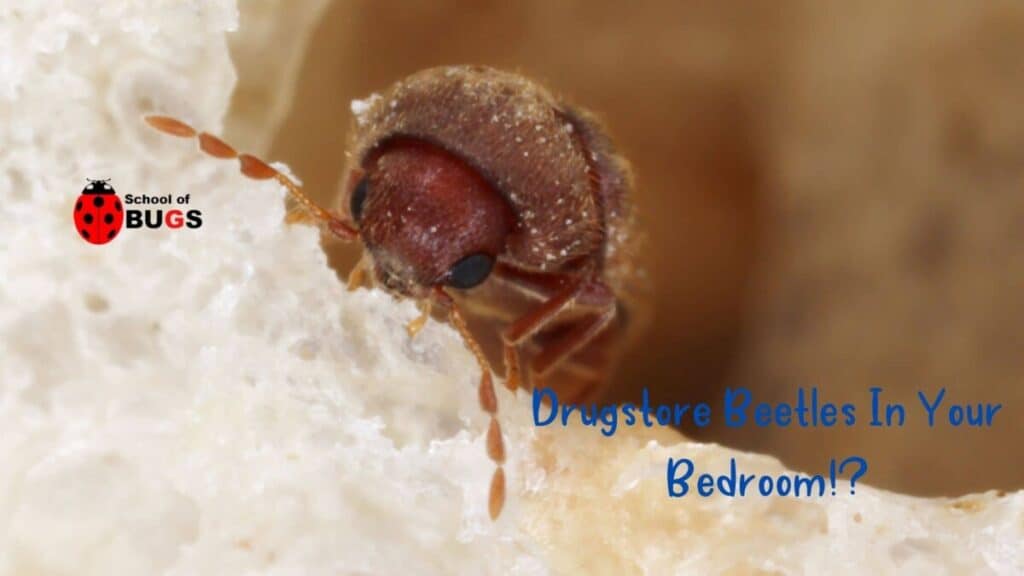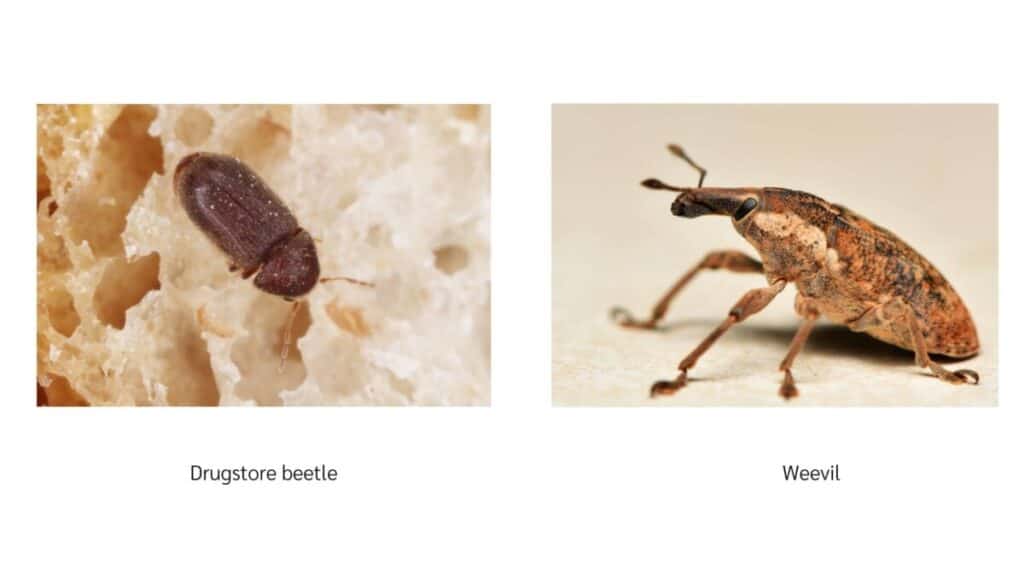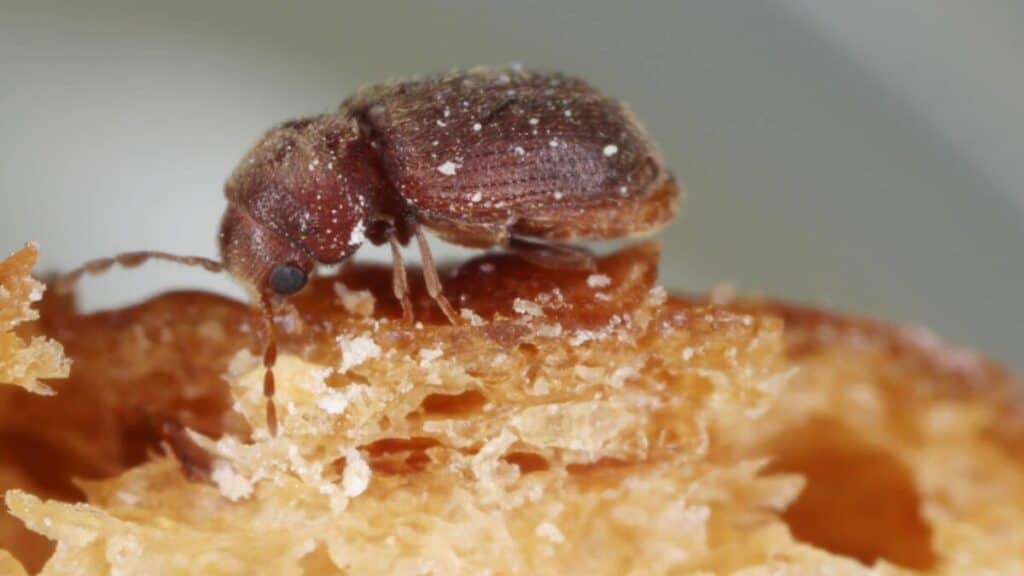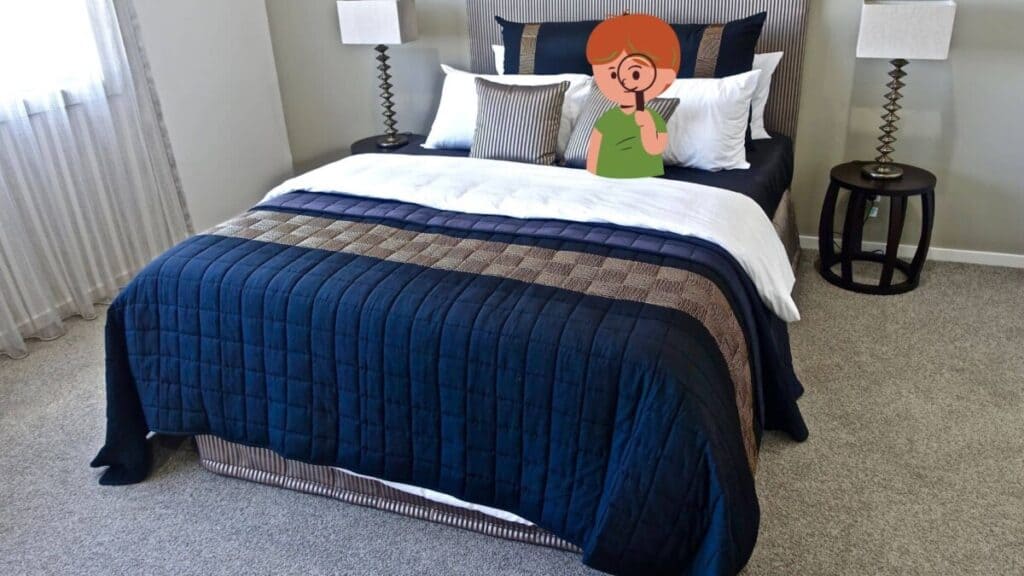
Drugstore beetles, along with cigarette beetles, are one of the more persistent invaders in your home and bedroom.
They have unique feeding habits that make them more prone to cohabiting with humans. Since it’s not easy to figure out the type of beetle you are dealing with, we hope that this article will help.
The drugstore beetle (Stegobium paniceum) is a tiny brown beetle that is also called the biscuit beetle or the bread beetle. It is frequently misidentified as the bread or grain weevil (Sitophilus granaries).
Drugstore Beetles are Distinct from Weevils
There are some similarities between the drugstore beetle and a weevil. For example, the drugstore beetle eats a wide variety of dried plant products, the same as weevils.
They are also similar in size, about 1/7 inches long.
However, they are distinctly different. The drugstore beetle is the only living member of the genus Stegobium, which belongs to the family Ptinidae.
This family also includes spider beetles and deathwatch beetles. The weevil, on the other hand, belongs to the superfamily Curculionoidea and is distinguished by its long snouts, which do not exist in the case of drugstore beetles.

What do Drugstore Beetles Eat, and Why are they Named as such?
Adult drugstore beetles can live outside the house and survive on pollen and nectar. However, they are attracted to the home as a source of food and possibly to find mates and a nest.
Beetles in general tend to be voracious and undiscerning in their choice of foods. Drugstore beetles stand out even more since they show a marked proclivity to go after a variety of pharmaceutical products!

For example, they are known to feed on dried herbs and multiple plant materials that are used in producing drugs – including but not limited to highly toxic substances such as strychnine.
Given their tolerance levels, it should not come as a surprise that drugstore beetles can feed on human food items such as spices and dried foods, as well as other items found in a human household such as leather, hair, wool, horn, book bindings and preserved specimens (e.g., taxidermy and museum specimens).
The alternative names for the species (that is, biscuit or bread beetle) arise from the fact that the drugstore beetle can thrive from pickings within the home, such as bread crumbs, crackers (biscuits) and hot spices.
How do Drugstore Beetles End Up in the Home and Bedroom?
Drugstore beetles thrive on food sources that are common around a human household – the long list includes herbs, spices, drugs, leather, hair, wool, book bindings, and so on.

While their primary habitat is likely within food containers – for example, the larvae will spend their entire existence eating inside a bag of food – they are strong fliers and will venture out to other locations within the house to seek mates and set up nests.
Another reason that drugstore beetles end up in living and sleeping areas is that by nature, they are attracted to light.
They equate sources of light with the presence of food and possible nesting areas. The bedroom will do fine for those purposes.
Once drugstore beetles get to the bedroom, they may not leave. There are too many goodies, some of which come from the human occupants (think of hair, flaked off skin, wool etc.), or from munchies or crumbs (such as bread crumbs, biscuits, cereal, even drugs) scattered on a bedside table or around the bed.
Being really small, these brown pests are hard to spot. They hang around in cracks in the wall and other unobtrusive spots.

In a short while, the warm bedroom becomes a home for them to live and propagate – which they do with a gusto (learn everything about that here).
Drugstore Beetles can do Some Damage
Drugstore beetles do not bite, similar to many other beetles found in the house (full list here).
However, while the adults are not harmful to humans, animals or structures, the larva will eat their way through a lot of stuff lying around the house and can cause damage.
Controlling Drugstore Beetles
The general principles regarding how to control beetle infestations in your bedroom and home (check them out) apply to drugstore beetles as well. In particular, you should avoid chemical insecticides.
As we described above, drugstore beetles can in fact thrive on some pesticides such as strychnine.
Alright, that’s it for this article, here are a few hand-selected articles that you might also find interesting reads:
Are Drugstore Beetles Harmful (Quick Facts)The Wonderful World of Beetles
Little Flat Brown Bugs in House – What Are They?
Recent Posts
Tiny Black Bugs in Bathroom NO WINGS: What They Are and What to Do!
Finding tiny black bugs in your bathroom can be uncomfortable, to say the least. Especially if they are persistent, or they appear in very large numbers, which they often like to do. When it...
Tiny Black Bugs in Plant Soil - What Are They & What To Do About It
A short horror story: You get a new houseplant. You do your best to take care of it. You’ve ensured that it has the right soil, the right amount of sun, it gets enough water. And then one day, you...

